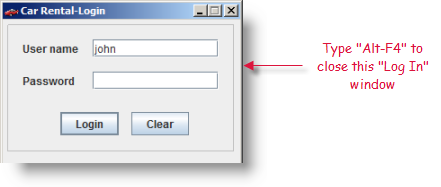type
Description
Simulate the typing of one or more keys into a window.
Arguments
window
TA name of the window into which keys are to be typed.
keys
Keys to type.
Valid contexts
This action may be used within the following project items: test modules and user-defined actions.
Notes
This action does not support iOS devices.
Note that this action does not include a control argument. In effect, type emulates typing keys with the character entry being directed to whichever control has focus at that point. To direct entry to a particular control, type is typically preceded by a focus control action.
For special keys, the following notations are used:
- Function keys: {F1} to {F12}
- Named keys: {enter}, {esc}, {capslock}, {numlock}, {scrolllock} {spacebar}, {backspace}, {home}, {end}, {pause}, {delete}, {page down}, {page up}
- Arrow keys: {up}, {down}, {left}, {right}
- TAB key: {tab}
- CTRL key combinations: Caret (^) plus the modified key. For example,
Ctrl + ais represented by ^a. - ALT key combinations: The percent sign (%) plus the modified key. For example, %{F4} represents
Alt + F4. - SHIFT key combinations: The plus sign (+) plus the modified key. For example, +a represents
Shift + a. - WINDOW key combinations: {Win} or {WIN} plus the modified key. For example, {Win}r represents
Window-r(used to display the Run dialog box).
For special keys for Safari on macOS, the following additional notations are used:
COMMAND key combinations: {command} plus the modified key. For example, {command}c represents
COMMAND + C.OPTION key combinations: {option} plus the modified key. For example, {option}{delete} represents
OPTION + DeleteRestriction:Currently, {capslock} is not supported for Safari running on macOS.
For special keys on mobile operating systems, the following notations are used:
- {home}, {back}, {menu}, {search}, {spacebar}, {enter}, {backspace}, {up}, {down}, {left}, {right}, {go}, {voldown}, {volup}.
TestArchitect supports all basic characters that are present on a standard keyboard, including all letters, digits and symbols, including all of ` ~ @ # $ % ^ & * ( ) _ + | } { ] [ ’ " ; : ? / > . < , " = -. However, certain symbol keys have special meaning in TestArchitect, and need to be “escaped” when you want to use them for straight character entry:
- Since the caret, percent sign, and plus sign characters are used to represent the CTRL, ALT, and SHIFT keys, respectively, in order to effectively type
^,%, and+with this action, enclose these keys in curly braces. For example: {+} writes+to the specified window. - As the pound key ( # ) is used in TestArchitect as an expression indicator, you must prepend a backslash ( \ ) to it to escape that functionality as use the symbol itself. For example: \# cars writes
# carsto the specified window. - For other symbolic keys, do not enclose them in curly braces. For example, use ? to write ? to the specified window.
- Since the caret, percent sign, and plus sign characters are used to represent the CTRL, ALT, and SHIFT keys, respectively, in order to effectively type
Curly braces that do not enclose strings recognized as special keys are treated as literal curly braces. For example, {xyz} writes
{xyz}to the specified window, since xyz has no special meaning to TestArchitect. In the event you need to write a literal string that would otherwise be translated by TestArchitect as a special key, enclose the first curly brace in another pair of curly braces. Hence, to type the literal {home}, use {{}home}.This action supports the <ignore> modifier. If the string
<ignore>is present as the value of any of the arguments, or any argument contains an expression that evaluates to<ignore>, the action is skipped during execution.
Applicable Built-In Settings
The following settings are applicable to this action: case sensitive, remove double quotes from cells, window wait.
Example

Action Lines
Result
